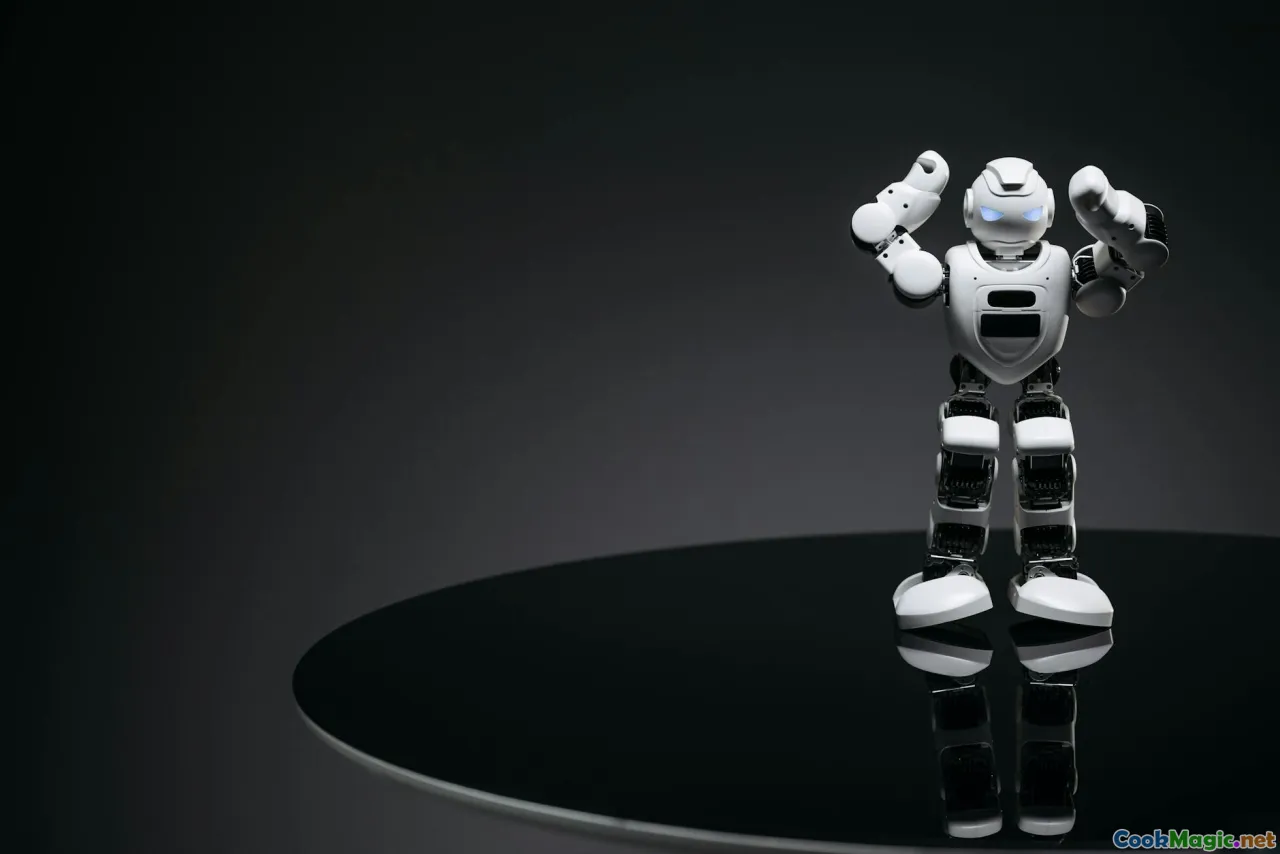AI Driven Recipe Development in Modern Kitchens
8 min read Discover how AI is revolutionizing modern kitchens by personalizing recipes, enhancing flavors, and shaping the future of culinary creativity. April 28, 2025 14:00
AI Driven Recipe Development in Modern Kitchens
Imagine a bustling kitchen where the clatter of pots and pans is joined by the quiet hum of intelligent algorithms analyzing flavors, textures, and nutritional profiles. It might sound like science fiction, but today, artificial intelligence (AI) is seamlessly integrating into our culinary spaces, transforming the way we create, experience, and enjoy food.
The Dawn of AI in the Culinary World
The journey of AI in the kitchen began with simple automation—thermostats adjusting cooking temperatures or timers signaling the perfect moment to flip a pancake. Over the past decade, however, this technology has evolved into sophisticated systems capable of understanding complex flavor profiles, dietary needs, and even cultural nuances. The modern kitchen is no longer just a space for traditional cooking; it’s becoming an interactive, intelligent environment where recipes are dynamically tailored to individual preferences.
From Data to Delicious: How AI Develops Recipes
The Data-Driven Approach
At the core of AI-driven recipe development lies massive datasets—thousands of recipes, flavor pairings, nutritional information, and user preferences. Machine learning algorithms analyze this data to identify patterns and predict successful combinations. For instance, if a user enjoys spicy Thai dishes and prefers vegan options, the AI can generate new recipes that blend these elements, creating a personalized culinary experience.
Flavor Pairing and Sensory Analysis
One of the most fascinating aspects of AI in cooking is its ability to simulate human taste and smell perceptions. By analyzing chemical compounds in ingredients, AI systems can suggest unexpected yet harmonious flavor pairings, such as the classic pairing of dark chocolate with chili or the surprising harmony between watermelon and feta. These insights open up new avenues for chefs and home cooks alike to experiment beyond traditional boundaries.
Continuous Learning and Adaptation
AI systems are not static; they learn from user feedback and evolving culinary trends. If a recipe gains popularity or a particular ingredient becomes scarce, the AI adjusts its suggestions accordingly. This dynamic learning process ensures that recipe development remains relevant, innovative, and tailored to current tastes.
Cultural and Historical Perspectives
Preserving Culinary Heritage
While AI propels innovation, it also offers opportunities to preserve and reinterpret traditional cuisines. For example, AI can analyze ancient recipes from diverse cultures, reconstructing them with modern techniques or suggesting healthier ingredient substitutions while respecting cultural authenticity.
Bridging Cultures Through Food
AI-driven platforms facilitate cross-cultural exchanges by combining elements from different culinary traditions. Imagine a fusion dish that marries the bold spices of Moroccan tagine with the delicate techniques of Japanese sushi—AI can help craft these novel, culturally rich recipes.
Emotional and Personal Connections
Food is deeply emotional—linked to memories, celebrations, and identity. AI enhances this connection by enabling personalization at an unprecedented level. For instance, a chef can input a loved one's favorite ingredients, and the system can generate a heartfelt, customized recipe, turning a simple meal into an intimate gesture.
The Joy of Discovery
For home cooks, AI offers an exciting journey of discovery. It can suggest recipes based on available ingredients, reducing waste and encouraging creativity. Imagine opening the fridge and, with a few taps, receiving a recipe that transforms leftovers into a gourmet meal, complete with sensory descriptions to inspire confidence.
Practical Applications and Future Trends
Smart Kitchen Appliances
Integrating AI into appliances—smart ovens, refrigerators, and sous-vide machines—allows for precise control and real-time adjustments. These devices can suggest recipes based on inventory, monitor cooking progress, and even adjust seasoning levels.
Personalized Nutrition
AI can analyze dietary needs, health goals, and even microbiome data to craft recipes that optimize individual well-being. This personalization is especially relevant amid growing health consciousness and specialized diets.
Culinary Creativity and Innovation
By automating routine tasks, AI frees chefs to focus on innovation and presentation. It also acts as a collaborative partner, offering unexpected ideas that challenge traditional boundaries.
Challenges and Ethical Considerations
While AI offers immense potential, it also raises questions about authenticity, creativity, and cultural sensitivity. Relying too heavily on algorithms might risk homogenizing culinary diversity or diminishing the human touch. As the culinary world embraces AI, maintaining a balance between technological innovation and cultural integrity remains essential.
Personal Reflection: My Journey with AI in the Kitchen
As a food writer and culinary enthusiast, I’ve witnessed firsthand how AI tools like flavor pairing apps or recipe generators inspire new creations. I recall experimenting with an AI-suggested recipe that combined roasted beetroot with a hint of cardamom and coconut milk—an unexpected yet delightful combination that became a personal favorite. Such experiences reaffirm that technology, when used thoughtfully, can deepen our connection to food and spark endless creativity.
Conclusion: The Future of Culinary Innovation
AI-driven recipe development is not here to replace chefs or home cooks but to augment our capabilities, spark innovation, and deepen our understanding of flavors and traditions. As technology continues to evolve, the modern kitchen will become an even more vibrant space—where human intuition and machine intelligence collaborate to craft dishes that are not only delicious but also meaningful.
Whether you’re a professional chef, a curious home cook, or simply a lover of food, embracing AI in the kitchen opens a world of culinary possibilities. The future of food is intelligent, personalized, and profoundly exciting—ready for you to explore.
Let your culinary imagination soar with the power of AI, and transform the way you cook, taste, and connect through food.









